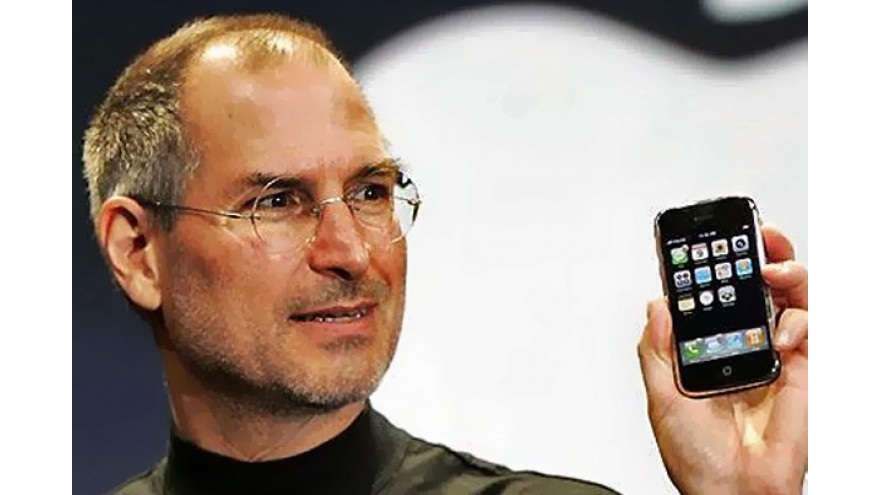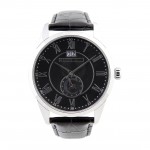IPhone ninth anniversary: A Brief History
January 9, 2007, Macworld Conference at the Moscone Center in San Francisco. After a few initial minutes that was palpable emotion, Steve Jobs spoke the following words:
Today is a day we've been waiting for two and a half years ago.
He said calmly, measuring good words. He knew he was about to unveil a product that could sink your company or catapult to success. Despite being a presentation in which he was "betting" the company, he trusts your odds. Shortly after that so famously he said:
Today we present three revolutionary products. The first, a scenic iPod with touch control; the second is a revolutionary mobile phone; the third, a breakthrough Internet communications device.
The rest, as they say, was history. In Applesfera we wanted to pay tribute to the ninth anniversary of the presentation by reviewing each of their generations. At the same time, slightly we revolveremos the trunk of memories of this medium, which was released a few months earlier.
Exactly six months after this presentation, Pedro Aznar told us how it felt to hold an iPhone in hand (the original logo of Applesfera included):
The first time you see a live iPhone, you think of a familiar but extremely nice device. [...] No photos or video or anything that you may see that justice. [...] All we have created the false impression that it is a great device and it is not.
The reality is that the iPhone was the largest and highest resolution compared with the devices of the time display. Its main attraction was the new user interface, combined with multi-touch technology that characterized him. No mandatory stylus or resistive screens.
The truth is that, despite their innovations, many at the time criticized its high price and lack of 3G connectivity. But no matter. For a year after Apple took another blow on the table.
Second generation iPhone 3G
Samuel Lopez and Miguel Campos were responsible for analyzing and comparing the new terminal with the first generation. Its main novelties were the inclusion of 3G connectivity, greatly increasing the loading speed of Safari, along with GPS. On the software side, iPhone OS 2.0 brought the main novelty the new App Store, giving the go-ahead to native apps.
Despite the lack of basic functions such as cut and paste or the ability to play Flash videos (see comments), the focus remained on the product hardware. We lost the aluminum finish, some slender and remained the same camera but instead we won in connectivity and location.
Third generation iPhone 3GS
The terminal inaugurated the trend tick-tock of Apple. A year focused on the new design, the next to improve their components. Samuel Campos returned to introduce this terminal incorporating video recording, compass and voice control as major developments. Of course, iPhone OS 3 brought the long-awaited copy & paste function.
Your new autofocus camera 3mpx was a huge leap forward. The camera began to be used more frequently by users and pointed the direction that Apple would your smartphone. The "S" meant definitely speed.
Fourth generation: iPhone 4
Retina display. 5mpx camera. Two elements that define the success of the iPhone. It was a real event and that from this generation began to see more and more iPhones around me, something that eventually confirmed sales figures.
Pedro Aznar discussed this model, which missed the rounded edges of the older versions. Everything else were improvements. The new front camera and FaceTime opened the emergence of new possibilities of communication between users of IOS. The system was faster thanks to the release of new chips for Apple iPhone: Series A.
On the software side, the entire interface is adapted to the new retina resolution and operating system was renamed to iOS 4, multitasking long-awaited debut.
Fifth generation: iPhone 4S
If not for keeping the design, the iPhone 4S would have received greater recognition. As was becoming clear, the S version was a qualitative leap in camera chip and speed. The new sensor 8mpx turned in a solid substitute for any casual photographer. Again, the charge to introduce this mobile was Samuel Campos.
The new A5 chip was powerful but keeping consumption in check, even under pressure, while increasing the overall speed of the device. But the star of this iPhone was Siri, the virtual assistant that Apple introduced in October 2011. At first it was not available in Spanish, something he had to wait until 2012.
Sixth generation iPhone 5
Pedro Aznar titled his analysis as "Faster, higher, stronger", which will come in handy. It was 2012 and the trend of increased display terminals competition was evident. Instead of matching other smartphones, Apple quietly increased his to 4 inches (half inch longer than the previous).
This iPhone premiered a number of improvements and major changes. A new slimmer design and aluminum where the protagonist again; an improved display; new A6 chip; LTE connectivity (finally); Best maintaining megapixel camera; new headphones. And the Lightning connector, how to forget.
Over time and after addition of iCloud and iMessage in the previous generation, it was becoming evident that the years passed iOS. iOS 6 would be the last update skeumorfismo show in all its glory.
Seventh generation iPhone 5s and iPhone 5c
The first time we saw two new iPhones presented at par. One stood out for being the first to integrate a mobile chip 64-bit, catching unsuspecting entire industry. The other, being an iPhone 5 with a younger repackaged and without a significant price reduction as everyone expected.
Thanks to this chip, the iPhone 5s incorporated a new way to unlock the terminal: Touch ID. Fast, secure and easy to set up, Touch ID was spot where all previous attempts had failed. In addition, our first iPhone was able to take bursts of pictures and record video in 1080p.
As icing on the cake, Apple redesigned from top to bottom the appearance of iOS 7, making it look more suited to the times.
Eighth generation iPhone 6 and iPhone 6 Plus
After successfully weathering the storm of the great diagonal finally Apple joined the party with two terminals: one large and one enormous. Second iteration 64bit chip, besides the co-processor M8 new generation iPhone swept both sales and broke records for 12 months.
Screens and improved camera (the 5.5-inch model with optical stabilization), with a new slimmer design (which raised the ghosts of #Antennagate) and some early versions of IOS 8 were the main protagonists. Apple also introduced Apple Pay as its own mobile payment solution, although we are still waiting for their official arrival to the world.
Ninth generation iPhone and iPhone 6s 6s Plus
Under the slogan "the only thing that has been changed everything," the latest generation iPhone came ready to pulverize all records. Practically the same in design, this pair of iPhones renew it all.
For the first time since the iPhone 4S, megapixels were increased from 8 to 12; Live recording at 4K and Photos; smaller but identical battery autonomy thanks to the new generation of chips A9; 2GB of RAM; Touch ID faster. But the highlight is the new 3D Touch and haptic motor, a combo that has yet to show its full potential when interacting with our apps.
And that's how we were at the gates of the tenth generation of the iPhone and the tenth version of IOS. We may see major developments on both fronts in a solemn occasion. They betting allowed.





Comments